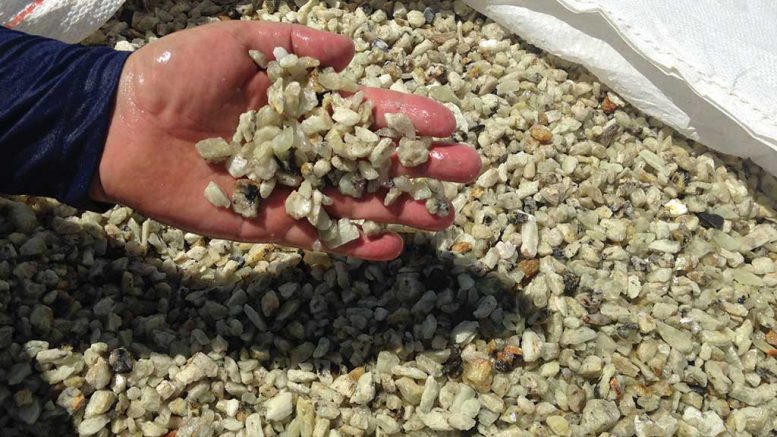The S&P/TSX Venture Composite Index rose 40.77 points or 4.60% to finish the August 30 to September 3 trading week at 932.22. Spot gold climbed 0.60% or US$10.80 per oz. to US$1,827.60 per ounce.
Shares of ISOEnergy jumped $1.43 to $4.00. The uranium exploration company announced that it had completed a 12-hole (4,428 metre) drill program at its Geiger property in Saskatchewan’s Athabasca Basin, about 35 km northwest of Orano Canada’s McClean Lake uranium mine and mill, and is starting to drill at its flagship Larocque East project, which is adjacent to the north end of its Geiger property. The Larocque East project hosts the Hurricane zone uranium deposit, which was discovered in the company’s summer 2018 drill program. Drilling at Larocque East will consist of 30 drill holes (12,000 metres) and will focus on expansion, infill and exploration drilling. The main target area is a three km long section of the Larocque Lake trend, where DC-resistivity signatures similar to that of Hurricane are present and where historic drilling intersected alteration, structures, graphitic basement and anomalous geochemistry. As of June, NexGen Energy is ISOEnergy’s major shareholder, with a 51% stake.
Sigma Lithium rose 77¢ to $9.94 per share. The junior announced that it has selected NASDAQ for its dual listing in the United States. Sigma Lithium also reported that it has made significant progress towards building the mine and plant for Phase 1 production at its Grota do Cirilo lithium project in Brazil. The company has completed the final optimized design of the two pits and waste piles for the first mine, and completed clearing, grubbing and topsoil removal for the plant. It plans to start placing orders for long-lead items during the third quarter of this year. The company is also working on a feasibility study for Phase 2 production, which is examining potentially doubling the project’s total capacity to 440,000 tons per year.
Shares of NEO Battery Materials were up 3¢ to 86¢. The junior announced on September 3 that it had received approval to trade on OTCQB Exchange under the NBMFF ticker. The junior also reported that it has up-scaled the capacity of production from its pilot plant to a semi-commercial scale facility for silicon anode materials manufactured using its proprietary nanocoating process. The semi-commercial plant is now finalized to produce 120 tons per year, a 12-fold increase from the original capacity of about 10 tons per year. According to the company, if a ratio of 9:1 for graphite to silicon in the anode (a 10% silicon loading) is assumed, 120 tons per year would be sufficient to supply 40,000 electric vehicles. On September 2, the junior also announced that it has received a sample order for its silicon anode prototype from a major U.S.-based solid-state electrolyte developer to evaluate the compatibility of the two parties’ respective materials.


Be the first to comment on "TSX Venture rises, Aug. 30-Sept. 3"